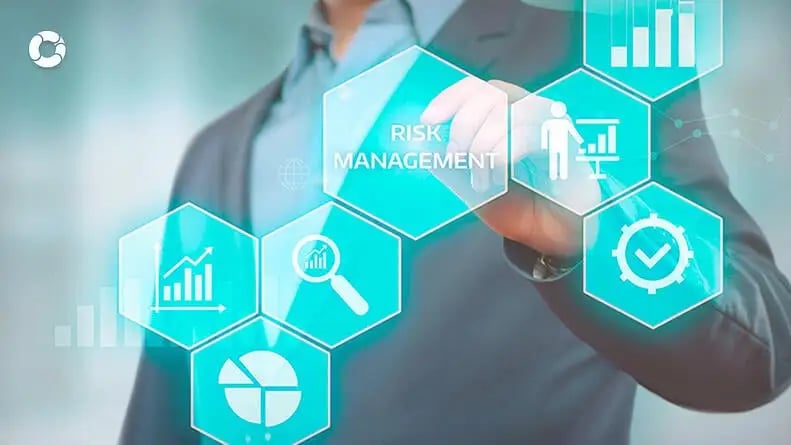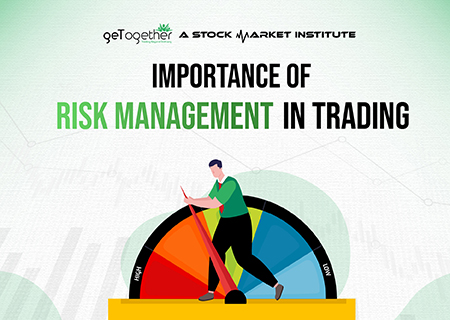How the Importance of Risk Management Shapes Powerful Leadership
How the Importance of Risk Management Shapes Powerful Leadership
Blog Article
Exploring the Significance of Risk Management for Effective Decision-Making Strategies
In the elaborate globe of company, Risk Management arises as an important element in the decision-making procedure. The ability to recognize prospective dangers and chances, and plan as necessary, can lead to the distinction between success and failure.
Recognizing the Idea of Risk Management
Risk Management, a vital element in decision-making, is often misconstrued or oversimplified. Typically, it refers to the identification, analysis, and prioritization of threats to lessen, keep an eye on, and regulate the chance or influence of regrettable events. Nonetheless, it's not merely regarding preventing unfavorable outcomes, but likewise regarding acknowledging potential chances. Risk Management includes structured and self-displined techniques, making use of information and insightful evaluations. It calls for a comprehensive understanding of the company's context, purposes, and the prospective risks that might combat them. From monetary uncertainties, lawful obligations, tactical Management mistakes, to accidents and all-natural disasters, it deals with different dangers. Importantly, effective Risk Management is not stagnant; it's a continuous, progressive process that progresses with changing circumstances.
The Function of Risk Management in Decision-Making Processes
In the world of critical planning and business operations, Risk Management plays an essential function in decision-making procedures. It assists in determining possible dangers and unpredictabilities that can affect the accomplishment of company goals. By mapping these threats, firms can develop methods to minimize their influence, making sure business continuity and security. Risk Management therefore ends up being a vital device in decision-making, aiding leaders to make informed selections based upon a comprehensive understanding of the threats included. It encourages a positive strategy, enabling organizations to prepare and expect for possible future circumstances. This significantly decreases the probability of unfavorable effects, promoting more reliable and reliable decision-making techniques. Consequently, Risk Management serves as an essential element in the decision-making procedures of any type of organization.

Exactly How Risk Management Improves Strategic Preparation
In the context of strategic preparation, Risk Management plays an essential role. Launching with the recognition of possible risks, it even more encompasses the execution of Risk mitigation steps. The duty of Risk Management is not fixed but dynamic, as it requires continuous surveillance and adjusting of strategies.
Recognizing Potential Risks
:max_bytes(150000):strip_icc()/operational_risk.asp-Final-4be32b4ee5c74958b22dfddd7262966f.png)
Carrying Out Risk Mitigation
Risk mitigation strategies can vary from Risk evasion, Risk transfer, to take the chance of decrease. Each technique ought to be customized to the details Risk, considering its potential influence and the company's Risk resistance. Efficient Risk mitigation needs a deep understanding of the Risk landscape and the potential effect of each Risk.
Tracking and Readjusting Strategies
Though Risk mitigation is a crucial action in strategic planning, continuous surveillance and adjustment of these methods is equally vital. This continuous process permits organizations to recognize brand-new risks and reassess existing ones, making certain the carried out approaches remain reliable in the ever-changing organization atmosphere. It also gives an opportunity to examine the success of the Risk Management measures, permitting changes to be made where needed, further enhancing strategic planning. Reliable monitoring and adjustment need using analytics and key efficiency signs (KPIs) to gauge efficiency. These devices provide beneficial data-driven understandings that can educate critical decision-making. For that reason, monitoring and readjusting Risk Management methods is an important part for boosting an organization's strength and critical preparation.
Situation Studies: Successful Risk Management and Decision-Making
Worldwide of business and money, successful Risk Management and decision-making commonly work as the pillars of flourishing ventures. One such entity is a multinational oil company that reduced economic loss by hedging versus changing oil prices. In an additional instance, a tech start-up prospered by determining and approving risky, high-reward approaches in an unstable market. A worldwide financial institution, faced with governing unpredictabilities, effectively browsed the scenario through aggressive Risk assessment and dynamic decision-making. These cases highlight the value of astute Risk Management in decision-making procedures. It is not the lack of Risk, but the Management of it, that frequently sets apart successful firms from unsuccessful ones. These instances underscore the important function of Risk Management in tactical decision-making. importance of risk management.
Tools and Techniques for Effective Risk Management
Browsing the complex puzzle this website of Risk Management requires the best set of methods and tools. These devices, such as Risk registers and warm maps, aid in identifying and examining prospective dangers. Methods include both measurable methods, like sensitivity analysis, and qualitative techniques, such as SWOT analysis. These help in focusing on threats based on their prospective influence and probability. Risk reaction techniques, an essential part of Risk Management, include accepting, preventing, moving, or mitigating risks. Tracking and controlling threats, through regular audits and evaluations, ensure that the approaches continue to be efficient. With these tools and strategies, decision-makers can navigate the facility landscape of Risk Management, therefore facilitating educated and efficient decision-making.
Future Trends in Risk Management and Decision-Making Approaches
As we check out the vast landscape of Risk Management, it becomes noticeable that the strategies and devices utilized today will remain to develop. Future patterns aim in the direction of an enhanced reliance on technology, with fabricated knowledge and device understanding playing substantial roles. These technologies will certainly allow companies to anticipate prospective dangers with better accuracy and make even more educated decisions. Furthermore, there will certainly be a growing focus on resilience, not simply in managing dangers but likewise in recovering from damaging scenarios. The idea of Risk culture, where every member of a company is conscious and involved in Risk Management, will obtain a lot more prestige. These fads declare a more positive and inclusive strategy in the direction of Risk Management and decision-making.
Conclusion

Risk Management hence comes to be a crucial tool in decision-making, aiding leaders to make informed options based on a comprehensive understanding of the threats included. Risk reduction methods can vary from Risk avoidance, Risk transfer, to risk reduction (importance of risk management). Efficient Risk reduction requires a deep understanding of the Risk landscape and the prospective influence of each Risk. check over here Risk action strategies, a key element of Risk Management, involve accepting, preventing, moving, or more helpful hints mitigating dangers. The principle of Risk culture, where every member of an organization is aware and involved in Risk Management, will certainly acquire much more prestige
Report this page